The distance between any two notes can be defined by steps - half steps, whole steps, semi-tones, whole tones. From this series of steps you can get the names of the notes of ANY of the fifteen major scales.
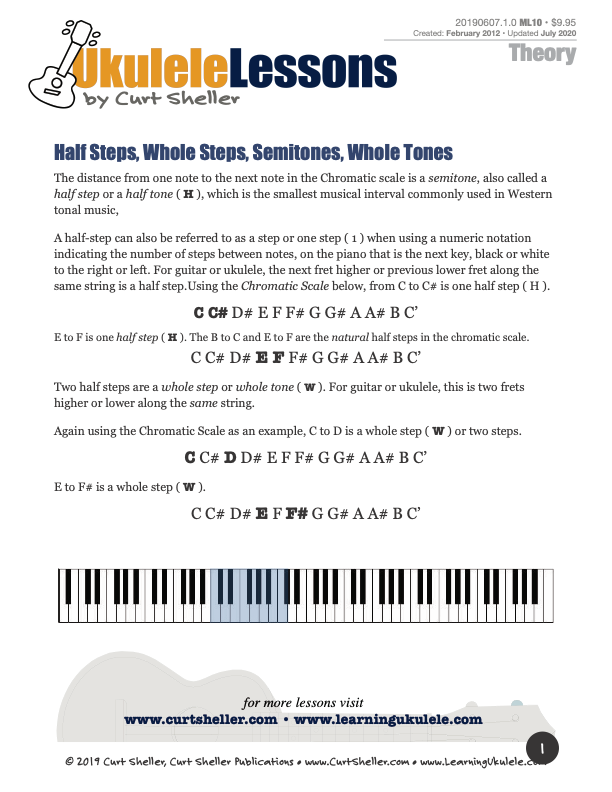
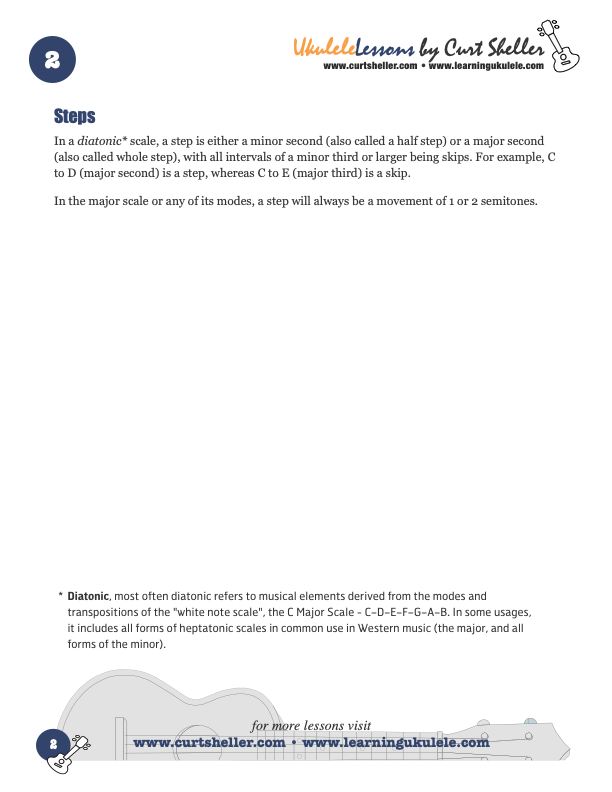


The distance between any two notes can be defined by steps - half steps, whole steps, semi-tones, whole tones. From this series of steps you can get the names of the notes of ANY of the fifteen major scales.
Available for Premium Site Access Plans Only
Half Steps, Whole Steps, Semitones, Whole Tones
The distance from one note to the next note in the Chromatic scale is a semitone, also called a half step or a half tone ( H ), is the smallest musical interval commonly used in Western tonal music, A half-step can also be referred to as a step or one step ( 1 ) when using a numeric notation indicating the number of steps between notes. On piano that is the next key, black or white to the right or left. The next key or note to the right is a 1/2 step higher. The next key or note to the left is a 1/2 step lower. For an instrument like guitar or ukulele the next fret higher or lower is a 1/2 step.
Using the Chromatic Scale , all twelve notes in one octave starting from C. The notes C to C# is one half step ( H or 1 ).
C C# D D# E F F# G G# A A# B C’
E to F is one half step ( H ).
C C# D D# E F F# G G# A A# B C’
Two half steps are a whole step or whole tone ( W or 2 ). This can also be referred to as two steps ( 2 ). For guitar or ukulele this is two frets higher or lower along the same string.
C C# D D# E F F# G G# A A# B C’
Scales are made up of a series whole steps and half steps forming a step pattern.
The Major Scale step pattern is:
- W W H W W W H or
- 2 2 1 2 2 2 1
And, on to the Six Essential Scales .
The distance between any two notes can be defined by steps - half steps, whole steps, semi-tones, whole tones. From this series of steps you can get the names of the notes of ANY of the fifteen major scales.
Available for Premium Site Access Plans Only
Half Steps, Whole Steps, Semitones, Whole Tones
The distance from one note to the next note in the Chromatic scale is a semitone, also called a half step or a half tone ( H ), is the smallest musical interval commonly used in Western tonal music, A half-step can also be referred to as a step or one step ( 1 ) when using a numeric notation indicating the number of steps between notes. On piano that is the next key, black or white to the right or left. The next key or note to the right is a 1/2 step higher. The next key or note to the left is a 1/2 step lower. For an instrument like guitar or ukulele the next fret higher or lower is a 1/2 step.
Using the Chromatic Scale , all twelve notes in one octave starting from C. The notes C to C# is one half step ( H or 1 ).
C C# D D# E F F# G G# A A# B C’
E to F is one half step ( H ).
C C# D D# E F F# G G# A A# B C’
Two half steps are a whole step or whole tone ( W or 2 ). This can also be referred to as two steps ( 2 ). For guitar or ukulele this is two frets higher or lower along the same string.
C C# D D# E F F# G G# A A# B C’
Scales are made up of a series whole steps and half steps forming a step pattern.
The Major Scale step pattern is:
- W W H W W W H or
- 2 2 1 2 2 2 1
And, on to the Six Essential Scales .
Related Lessons, Videos, Lesson Series, Songs, Books & Reference Charts, Resources & Assets, Workshops are below.
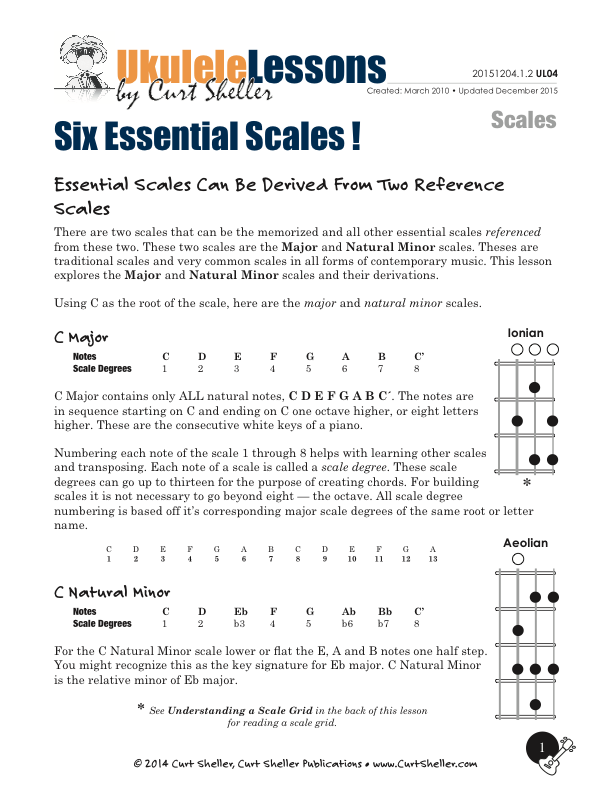
The six essential scales are: Blues Major Pentatonic Mixolydian Dorian Aeolian and Ionian From the six essential scales, you can get through a wide variety of traditional and contemporary music. A scale is simply a collection of pitches or notes, not really a "this is a Jazz scale", "this is a Blues" or "this is a Rock scale". It's how a scale is used that really matters not its name.

Harmonic Analysis is the understanding of the functional sequence of chords. It is the process used to analyze the harmonic structure of a progression, song or composition. This analysis is then used to make scale selections for improvisation and chord substitution.

Finally, learn the names of the notes of the ukulele fingerboard in C tuning .

Learn the six fingering principles to navigating the ukulele fingerboard. Fingering is one of the most universal topics. Book: Six Secrets of the Ukulele Fingering

Harmonic Analysis is the understanding of the functional sequence of chords. It is the process used to analyze the harmonic structure of a progression, song or composition. Book: Harmonic Analysis for Scale Selection and Chord Substitution

Learn to read single note melodies in the first/open position is a lot easier than you might think. Book: Ukulele – Reading Music Series – Primer

An organized collection of daily practice and reference material for the contemporary ukulele player for developing the vocabulary and knowledge necessary for single note playing. Book: Daily Practice Material for the Contemporary Ukulele
Checkout the Books & Reference Charts for additional Handy, Dandy Reference Charts.

Ukulele Fingerboard Chart for C Tuning, Low or High G – G C E A

Ukulele Fingerboard Chart for G Tuning, Low or High A – D G B E

A handy reference chart of all 15 major and relative minor key signatures. US Letter 8.5 x 11 sized (ANSI-A), A4
Checkout the Books & Reference Charts for additional Handy, Dandy Reference Charts.



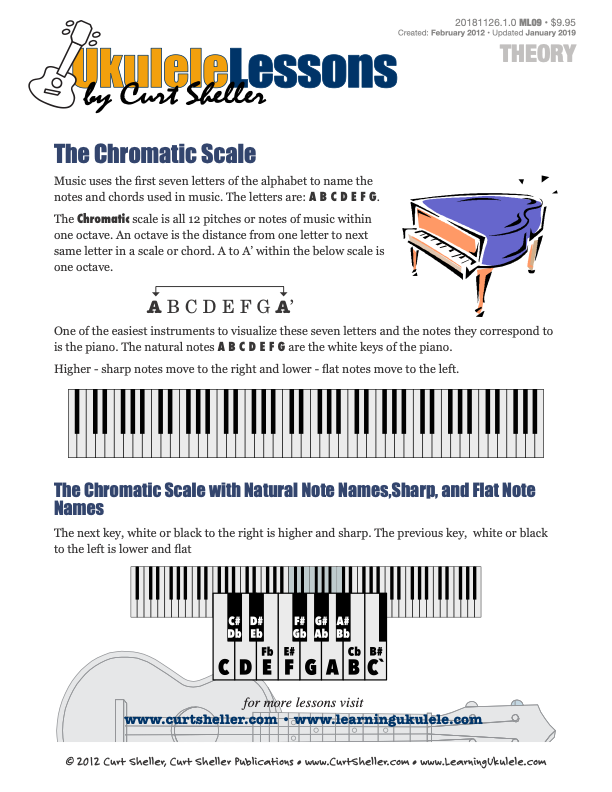
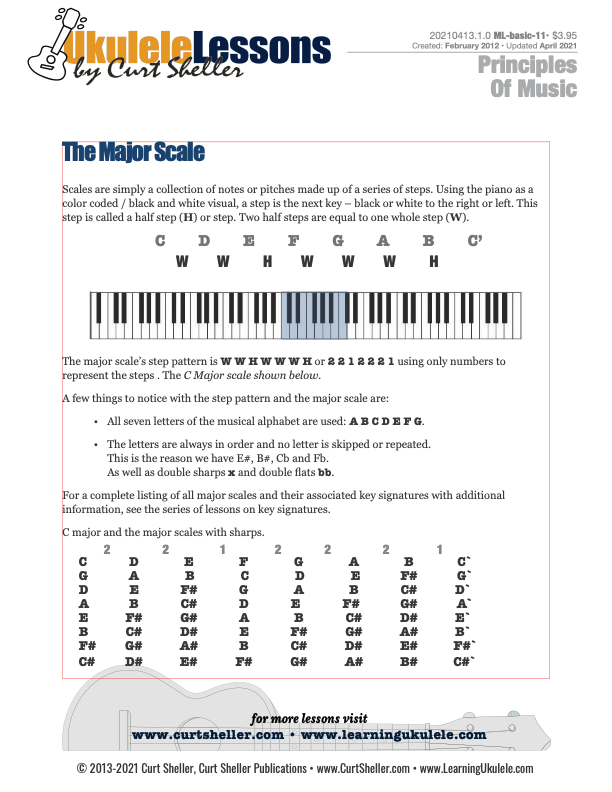


.jpg)